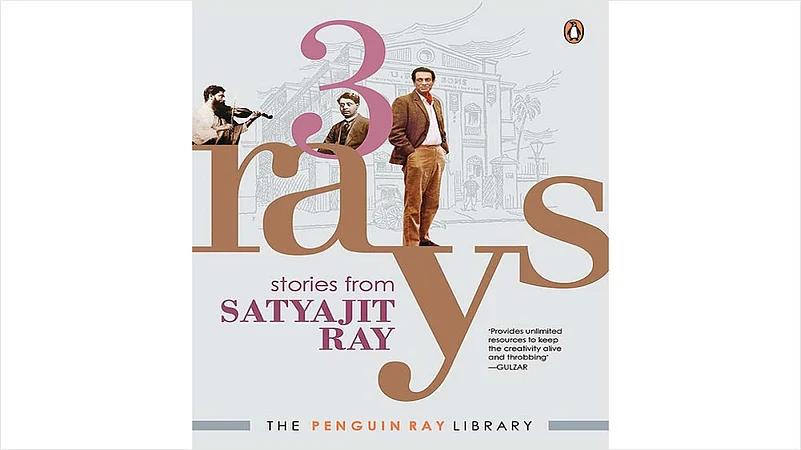Though the book is called 3 Rays, unsurprisingly one dominates—Satyajit. This collection brings Satyajit the translator to the fore, with his rendition of his grandfather Upendrakishore, his father Sukumar, his own short stories and a few scripts into English. It also includes previously unpublished works, including stories written in English. It has been edited by Sandip Ray with new material from his father’s notebooks.
Upendrakishore and Sukumar both wrote for children and Satyajit followed in their footsteps. The book has Ray’s script for Goopy Gyne Bagha Byne, based on Upendrakishore’s story and has illustrations by both Ray and his grandfather, showing the depth of Upendrakishore’s influence. Waiting in an airport lounge, Satyajit began to translate his father’s Abol Tabol; his version of Nonsense Rhymes displays a flexibility of language that later translators might have done well to follow. Ray’s translations were first published by Samar Sen in Now magazine and later by P. Lal’s Writer’s Workshop.
Advertisement
The greater part of 3 Rays focuses on short stories. Their themes are typical of his work, like that of the child who displays unexpected brilliance and arouses greed or despair, which will remind many of Mukul in Sonar Kella. Ray feels that those who have greatness thrust on them do not aspire to it, especially ‘Khoka’, who discovers a seemingly drastic cure for his brilliance so that he can go back to his everyday life. This is reflected in two Professor Shonku diaries, one focusing on Artificial Intelligence and the other on a super intelligent crow, bridging the divide between the animal, mechanical and human. Ray clearly feels that those with talent should not be put on display just because they are children or animals or even robots.
Advertisement
Many protagonists are loners with a love for wandering and a disinclination to share their solitude. Of them the most famous is the diffident Bonku Babu, who finds a spaceship in his neighbourhood pond and who is taught a lesson in self-worth by a multi-lingual alien. Ray embarks on a series of psychological studies which takes the reader wandering through worlds of paranoia and the paranormal. Stories like Ratan Babu and the Man, Indigo Night and Khagam have more than a touch of Saki about them in their balance of ambition, obsession and the delving into reasons why. The story of young Sadananda and the ants slips neatly into this category.
Balancing the dark tales are the stories of the fantastic, mainly the Professor Shonku ones that explore crows that can write, vanishing Greek professors and unicorns. In a few, the endings can be guessed at but they remain enthralling, since Ray fans will be intrigued to find out whether the story pans out as predicted.
The characters remain mostly middle class—often clerks who scrape the odds and ends of their leave together with office holidays so that they can go out of town. Only one comes from Ray’s advertising background and has a car of his own. Women, even working class ones, do not have much of a role to play. What comes through is Ray’s in-depth research of backgrounds, the names he chooses for his characters and his familiarity with various cities. It’s all about detailing and setting the scene. The two stories that he wrote in English centre on the theme of art and, while equally detailed in their narrative, showcase Ray’s fondness for exploring complex language.
Advertisement
There are occasional glitches, which may be due to an inability to decipher the handwriting in the notebooks or the printer’s devil—for example, ‘Hellos’ is down as ‘Helios’ in a Professor Shonku story—but that does not detract from the compilation’s value. Fans of Ray will be intrigued to discover the previously un-encountered, starting with the translations and going on to the sketches for the stories, the Bengali calligraphy that embellishes each and the photographs of screenplays and notes, accompanied by the many illustrations for Sandesh by all three Rays.




















